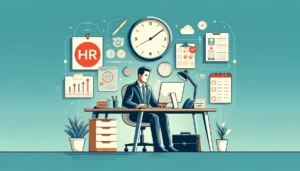How to implement a wellbeing strategy: three firms share their secrets
- 7 Min Read
Implementing a health and wellbeing strategy from scratch needs a cross-business consideration. Owain Thomas reviews how three organisations make different approaches work.
- Author: Owain Thomas
- Date published: Oct 5, 2016
- Categories

Implementing a health and wellbeing strategy from scratch needs a cross-business consideration. Owain Thomas reviews how three organisations make different approaches work.
The business case for wellbeing programmes is now quite an easy one to make – indeed many major multinational organisations have openly accepted it and instead focus on which initiatives will provide the greatest return on investment.
For those who remain unconvinced by this case, there is also the moral argument that employers should be doing more to support staff wellbeing to ensure they are an employer of choice and abiding by legal requirements.
“At Zurich we believe that the health, safety and wellbeing of our employees is a critical contribution to our commercial success – a happy and healthy workforce is a more productive one,” says Zurich Insurance diversity, inclusion and wellbeing manager Julie Thomas.
“We’re fostering a culture that values people’s health and wellbeing and allows them to take personal responsibility for their health and wellbeing.”
However, she raises another key point that can become lost within the implementation of wellbeing about how it applies to wider HR issues.
“I see a lot of alignments between wellbeing and inclusion – first with people bringing their whole healthy selves into work, and second the common challenges of inclusion such as removing the stigma around mental health,” Thomas adds.
These two points begin to highlight one of the keys that need to be considered where a corporate wellbeing strategy is being introduced.
It is important to realise that wellbeing means different things to different people and that to achieve wide-ranging buy-in this must be appreciated and embraced.
Bottom-up
 Speaking at the Champs Consulting health and wellbeing roundtable, Thomas (pictured) continues: “We ask employees ‘what does wellbeing mean to you?’
Speaking at the Champs Consulting health and wellbeing roundtable, Thomas (pictured) continues: “We ask employees ‘what does wellbeing mean to you?’
“I can tell you what it means to me – it means going for a run, spending quality time with my children, reading a book. Wellbeing means different things to different people and we need to build solutions that enable them to choose how they draw on those energies, because, let’s be honest, we don’t all get our energy from the day job.
“But we need to give them the opportunity to think about their wellbeing and support them both in and outside work,” Thomas adds.
Zurich has introduced a wellbeing champions group made up of employee volunteers who review the health and wellbeing of employees covering their physical and mental health, emotional resilience and work environment.
These volunteers are also empowered to create a localised programme of activities that supports the needs of their communities.
This helps to give the programme the ability to be localised and help as many people as possible but still part of a central corporate strategy.
Why BT is overhauling its major change processes to prioritise employee health
Follow the data
While stories such as the Zurich can prompt urges to dive straight in to creating programmes, HR and senior business leaders should pause before acting in haste.
As Bupa medical director – UK customer Dr Steve Iley explains, it is critical to get an overarching view of the organisation, and to do this requires data.
“Always start with data,” he says.
“It gives you important, valuable insight to your business and the way in which the different areas work. Having data will also help you raise awareness of these findings across the business, giving you the tools to tell your story.
Every business that I’ve been in or worked with is incredibly different – and even those that are in the same sector, the feeling and ethos are very different,” he adds.
This can encompass sickness absence, engagement, feedback and complaints or many other types of data available throughout the business.
It then allows a company specific strategy to be put in place and brings senior leadership into play by being able to target specific business-focused wellbeing needs.
Top-down
 “All the evidence now is, if your leaders aren’t interested you’re going to fail, it’s not going to work,” Iley (pictured) continues.
“All the evidence now is, if your leaders aren’t interested you’re going to fail, it’s not going to work,” Iley (pictured) continues.
“You need leadership from the front, someone that’s engaged and opens themselves up. It requires a brave leader to do that but if they do it the rest of the company follows.
“We’ve seen that when a senior leader is engaged, participation in things like health stations is much higher. In one organisation it was over 90% participation which is really impressive.
“That’s really well engaged and that was the senior leaders really helping to drive that,” he adds.
The culture of the organisation also plays a key role.
How are HR professionals able to drive a strategy forward if that is not actually articulated from the top down and bottom up within the organisation?
The strategy being considered should factor the culture of the workplace and understand that implementing such a change leans heavily on that culture.
Macro vs micro
Such an approach worked well at Guidant Group, as head of operations – private sector Karina Townley explains that the open and honest culture allowed a more targeted style of intervention.
“Some companies will look at wellbeing from a macro level and they may focus on creating a great office environment, and that’s great, that works for that organisation,” she says.
“But we wanted to look at wellbeing at a micro level – at the individual level instead of organisation level – because we felt that was the right thing for us to do. We had that culture where we just needed to make sure we were continuing on that journey.
“We have to make sure we don’t become complacent with just having a great culture because everyone’s needs change, everyone’s lives change,” she adds.
Marshall Goldsmith’s 12 point plan to boosting your engagement and performance
Fulfilling goals
Townley’s team is aiming to tie individuals’ happiness in to supporting their development to make sure they are reaching their own personal goals.
At the core of the strategy is enabling open conversations with the leader or manager better understanding their individual employee – it is a more coaching style of relationship.
“We naturally as a business always had monthly reviews but Open Blend has given us a platform to discuss wellbeing during those monthly reviews – but it wasn’t a huge leap of faith to deploy this because we already had an open and honest culture in place that people embraced,” Townley continues.
“Now we’ve adopted this strategy it has definitely opened-up leaders’ eyes in terms of understanding their individuals.
“Through these sessions it makes you really understand what makes that person tick and that’s what wellbeing is all about – it’s all about what that individual feels, thinks or has going on in their lives at any given time which impacts their own wellbeing,” she adds.
Supporting staff
The initial results have been positive as employees focus on fulfilling work goals and life ambitions and what they value with their time.
And it has not been lost that line managers need support in delivering this strategy.
Guidant shows the need for a particularly deep line manager intervention, but whatever strategy is decided on, the experts agree it is clear line manager involvement will be necessary.
That goes for employees too, albeit at a less technical level. While it may not be possible to cater for every employee’s individual need, it is vitally important to recognise that each employee has their own health and wellbeing need.
The overall realisation is now becoming that health and wellbeing is a much more all-encompassing approach, not solely targeted at a person’s physical or mental health but a wider lifestyle consideration.
CBI: Senior leaders must take responsibility for supporting line managers







